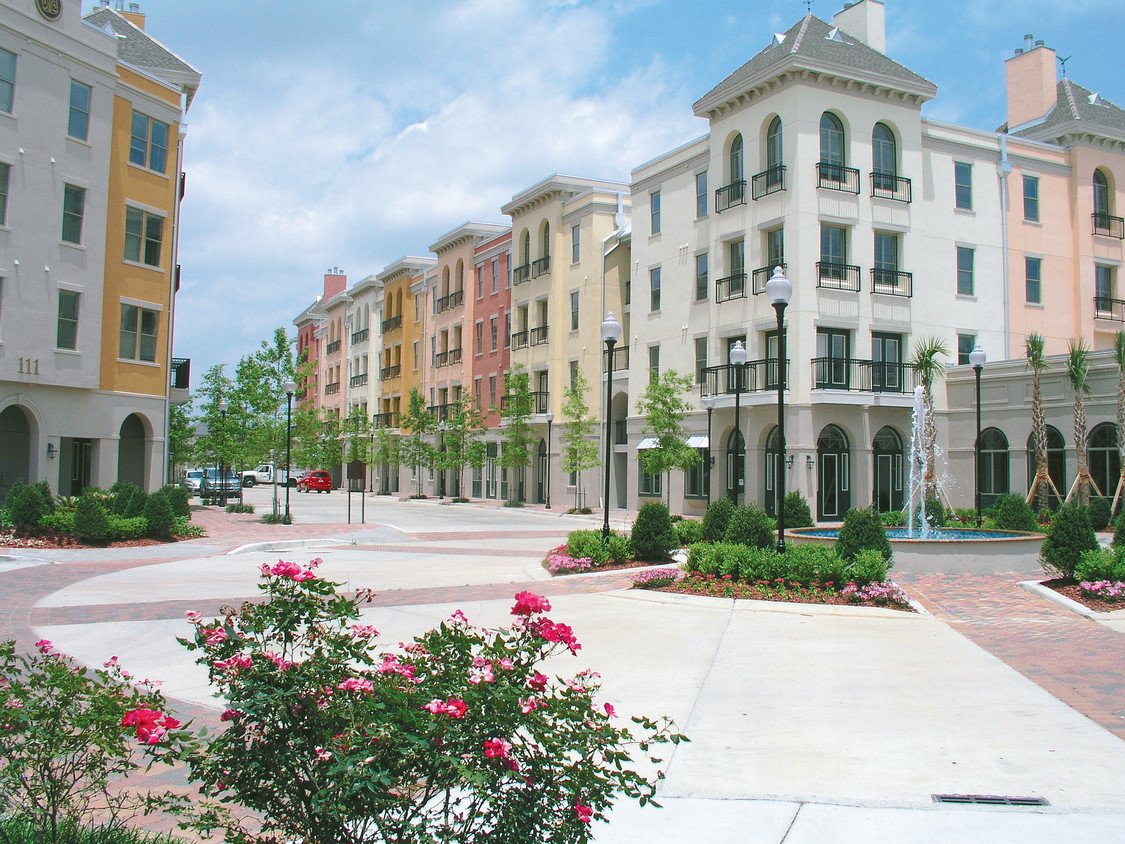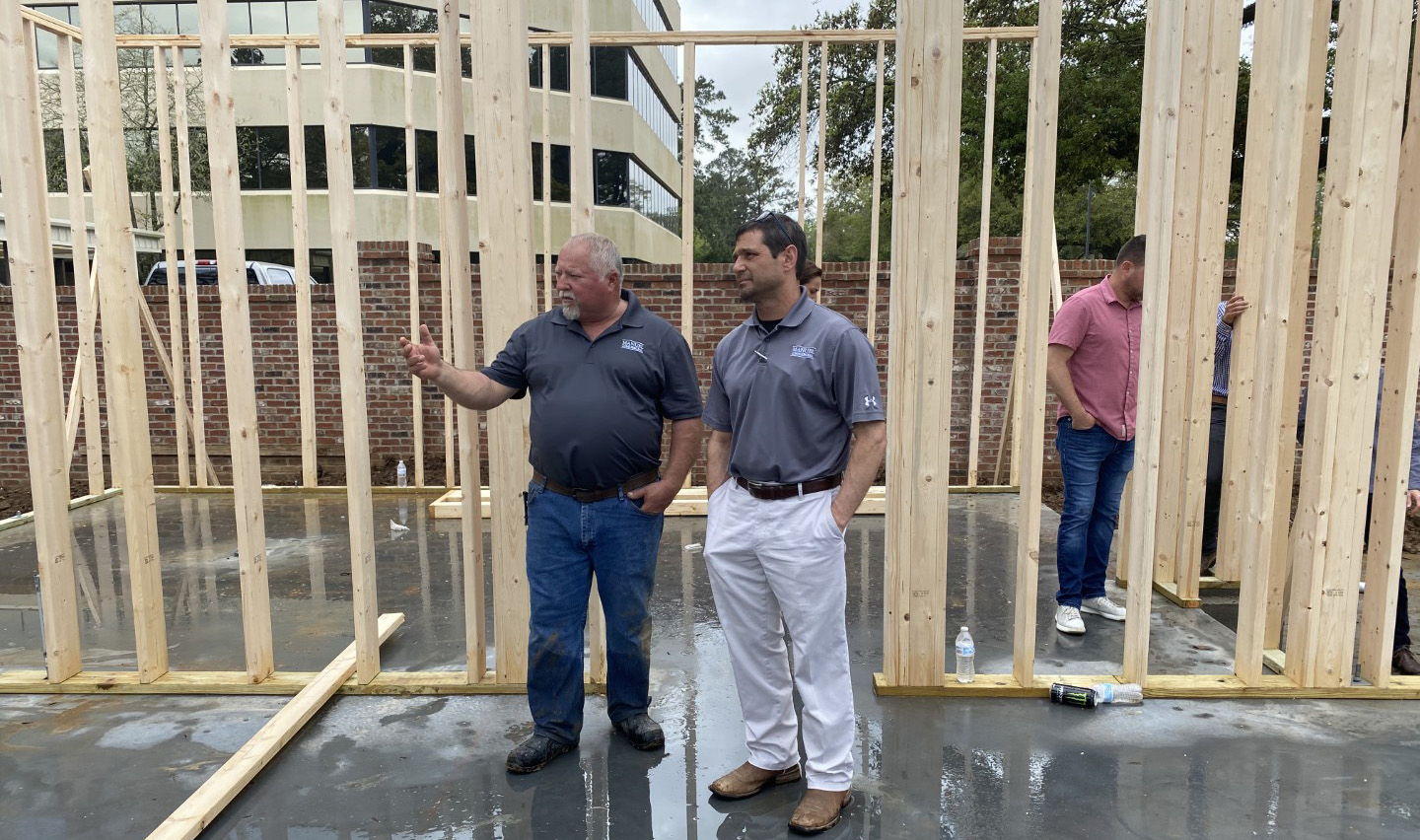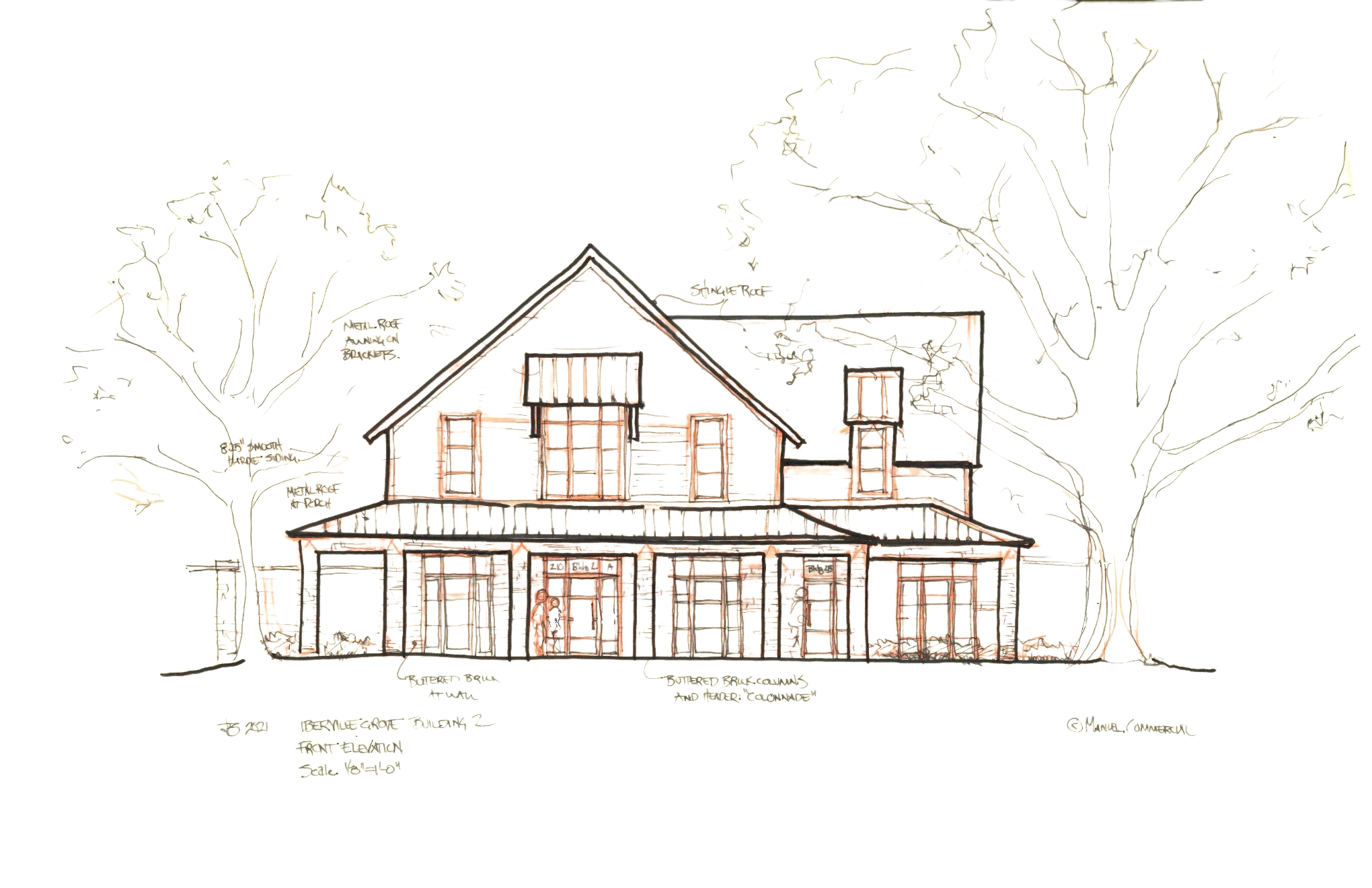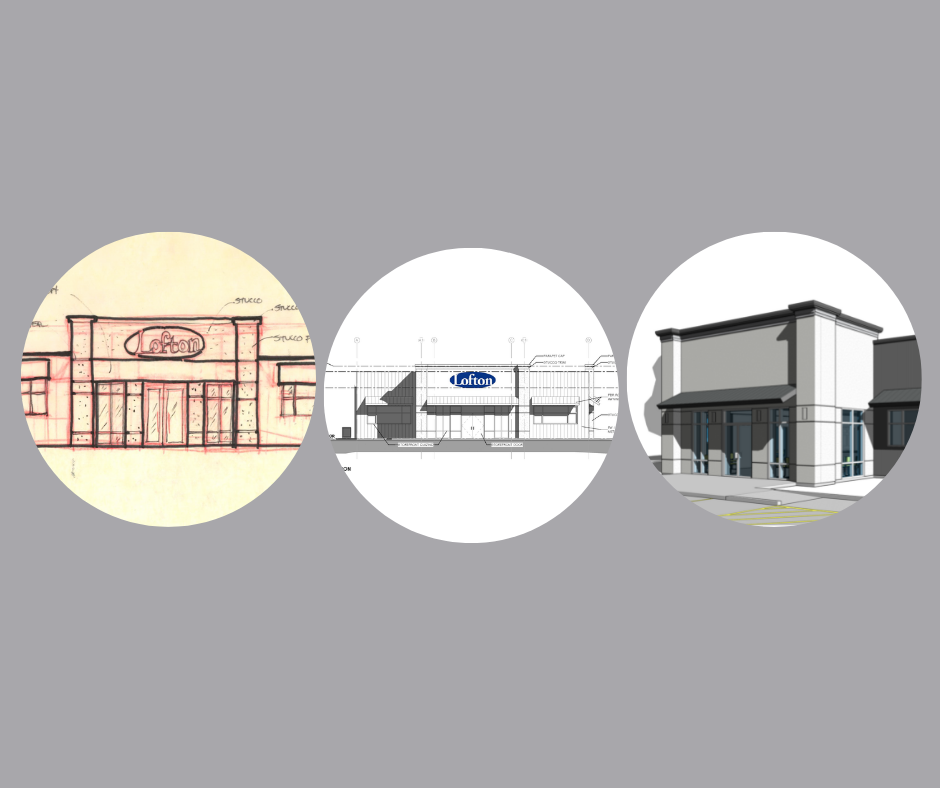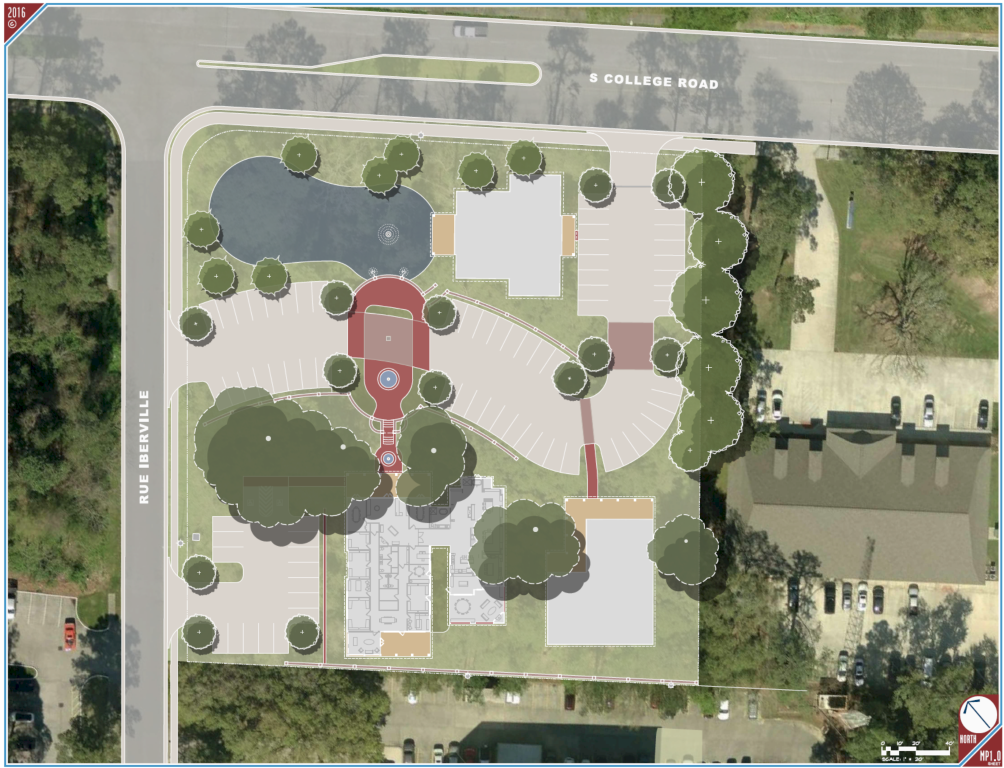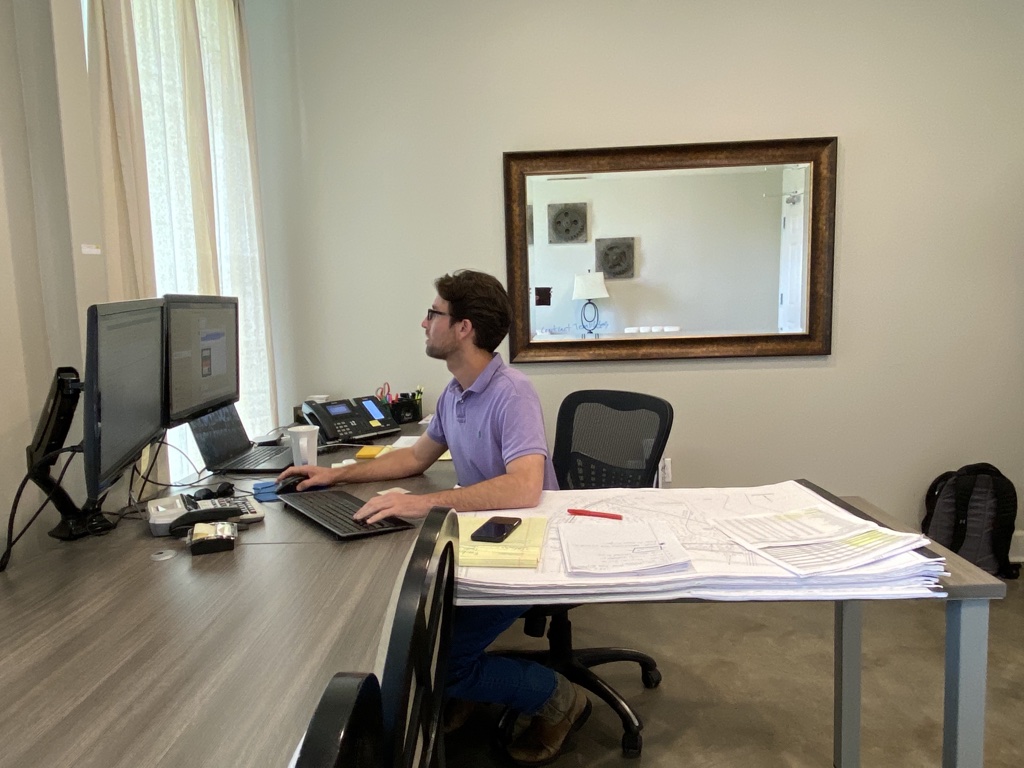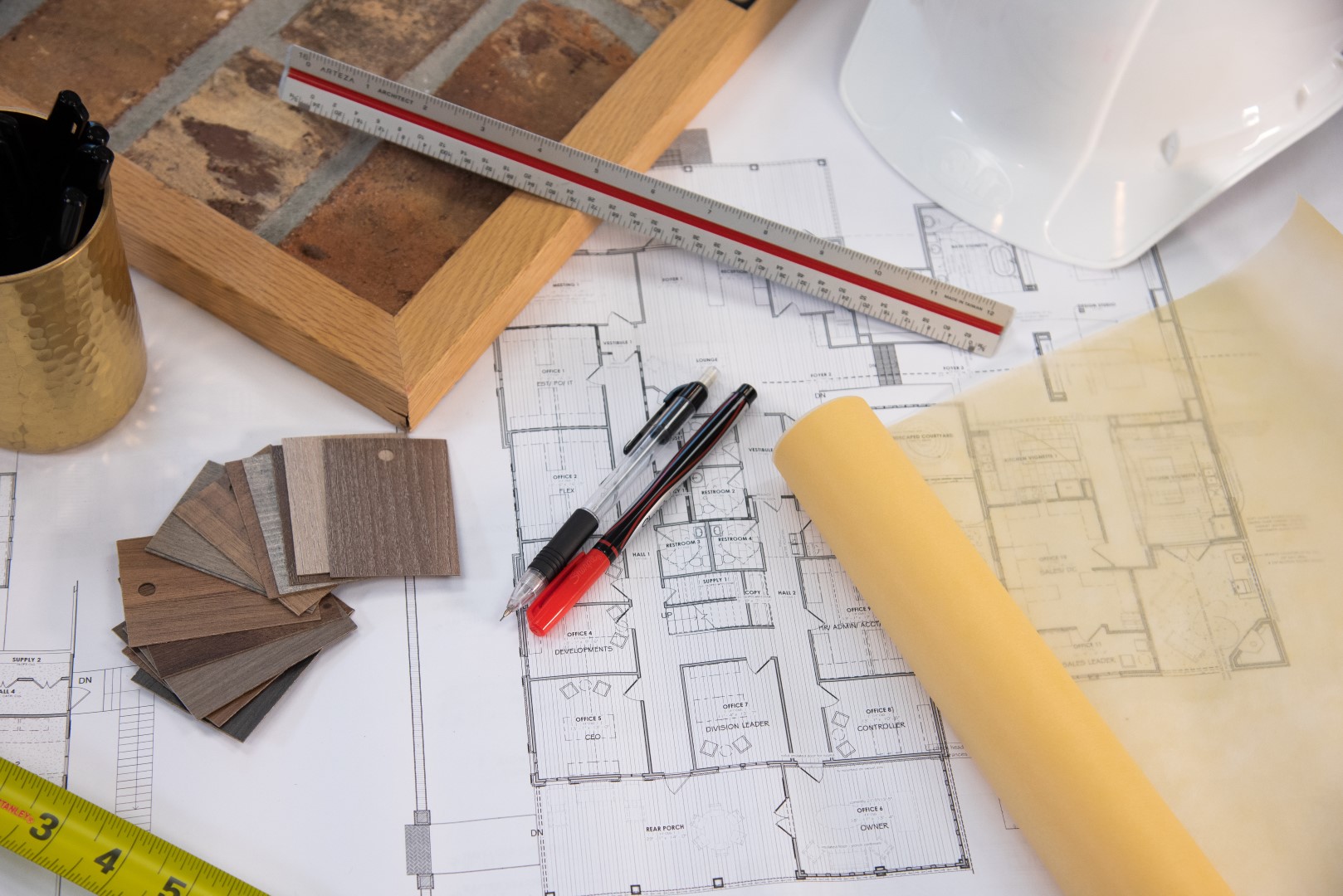Mixed-use is a term used to describe a type of urban development that combines residential, commercial, cultural, institutional, and entertainment into one cohesive space.
Continue readingThe Path To Obtaining an Architecture License – Personal Experience
Have you ever wondered what it takes to become a licensed architect? What kind of schooling is required? Read on to find out when our team became interested in Architecture and Design and the path to obtaining an Architecture license.

KEVIN STEWART, ARCHITECT, AIA
For me, it began with aptitude testing that highlighted interest in the arts and math/sciences. I loved geometry, spatial problems, and those 3-D puzzles where you take a cube and have to begin to cut blocks out of it and visualize it from different viewpoints. Architecture didn’t emerge for me as a forerunner in career path choices until a history paper Junior year, where I researched New Orleans architecture. Studying the effect of culture on design, I was hooked!

CHRIS LEGER, DESIGNER
As a child, around five years old, I was spending my days drawing houses and buildings that I would see while riding around in the back seat of my parent’s car. I would read drawing tutorial books and entered any art contest I possibly could throughout my school years. I was always told that architecture would be a great career path for me growing up, but that all took a back seat to my passion for baseball, especially during high school. It wasn’t until after hanging up the cleats playing college baseball that I decided to enroll in architecture school and pursue my second passion.
THE PATH TO LICENSURE
Any path to an architecture license requires an accredited degree from an accredited college (by NAAB). Historically a 5-year Bachelor of Architecture degree was needed. In the past two decades, many schools have converted to a 4-year Bachelor of Science in Architectural Studies with a 2-year Master of Architecture. We encourage prospective architecture students to research the school of their choice – both in-state and out.
Internship (AXP) & Examinations (ARE)
The next two portions of the licensure path can be accomplished concurrently and include roughly a 3-year internship under a licensed architect and a comprehensive 6-division examination. We would encourage an internship in whichever branch of design you’d like to concentrate in. If historical preservation interests you, find the best firm around to submit your resume. Our internships, with Abell + Crozier Architects (Kevin) and Trapolin Peer Architects (Chris), provided invaluable experience in project management and the every-day duties of an architect (this is NOT something you learn in school). The multi-division exam can be scheduled at the examinee’s discretion (in as few as three days, but not to exceed five years).
Practice & Continuing Education
Boards in each state issue architecture licenses, so the requirements could differ slightly. But in general, most states require the above steps before awarding a license to practice architecture. In the state of Louisiana, architects must practice within a licensed architectural firm. These can be large or small, teamed up with construction professionals or not. We have found great joy at Manuel Commercial, which does both architecture and construction. Not only do we get to witness our designs come to life, but we get to work in a very collaborative environment and learn from the guy in the field swinging the hammer. Another critical factor is staying sharp with learning opportunities! Our state board in Louisiana requires 12 hours of continuing education annually.
Why?
It’s a lot of work to get through architecture school, internship, and examination. The payoff for us isn’t the salary, there are many more profitable career paths, but the ability to envision something that doesn’t exist yet and facilitate its creation into the built environment. When our clients daily lives and businesses are positively affected by the spaces we design, that’s the reward!
Our Personal Experiences & Advice for Construction Industry Hopefuls
Making up for Lost Time? Get Ahead With Design-Build!
With design-build, design and construction share the responsibility of delivering the project on time, in budget, and to the desired specifications and needs of the client.
What does that look like?
The project team, made up of design and construction personnel, works simultaneously. While design is drafting the plans, construction is estimating the costs.
Together they are evaluating the best methods and materials for the specified project.
The high levels of collaboration and open lines of communication among the project team provide the best opportunity for design and construction to identify and resolve potential conflicts long before construction begins.
All of this combined reduces the project schedule, reduces the costs, and results in a hassle-free building experience!
An In-Depth Look at the Design Process
The design-build delivery method is on the rise but unfamiliar to many. Clients often ask us how this works, and in some cases, they do not understand that we provide architectural design in-house. We are a truly integrated firm in that we have architecture and construction professionals in the same office. I want to take a moment to discuss the design process and how we communicate design within the design-build setting.
Here we will specifically look at our architectural process and how we communicate in-house and with our clients. There are three steps to our process, Conceptual Design, Schematic Design, and Construction Documents. Each of these steps is executed based on feedback provided by the Owner, Architect, and Estimating. The illustrations provided in this blog are actual images from the design process of Lofton Staffing Services, a design-build project completed by Manuel Commercial.
Step 1 – Conceptual Design:
The intent is to get the basic needs and wants from the client at the initial kickoff meeting. We assess what is possible through basic code review, site evaluation, and programming. Basic code review provides us with zoning information that controls the amount of parking and buildable area through setbacks, square footage restrictions, building height restrictions, and occupancy and construction types. Clients typically come to us after purchasing land or when they are looking to buy land. If the client comes to us before buying land, we can help identify the lot size necessary for their desired project.
Once these basic codes are understood, we perform site evaluations and look for any restrictive covenants that control the types of materials allowed on the building or site. The plat of the property provides us with lot dimensions, flood zone, easement, and existing utility locations. This information informs the programming of the building and requires input from the client regarding spaces, square foot requirements, and adjacencies for access, visibility, and privacy. While reviewing the programming needs, we look at any precedent designs or images provided by the client that show the desired aesthetics and functions of the building.
We create a set of deliverable drawings from these processes that consist of a site plan, floor plan, and elevations. Depending on the project, these drawings can be developed through hand sketches or developed in BIM (Building Information Modeling) software. These drawings are informed by the estimation process and receive a high-level cost estimate. Conceptual estimates are generally based on historical data. If adequate historical data doesn’t exist we then involve reliable and trusted subcontractors and suppliers to assist us in providing the client with a conceptual cost for their desired project. Once the owner receives the conceptual estimate and drawings, there is a review and input phase to discuss any changes required to meet budget or design needs. There is constant communication with the client throughout the conceptual design process and often high confidence in the direction of the project even before the deliverables are presented to them.



Step 2 – Schematic Design:
Building upon the previous decisions made in conceptual design, additional information is added to the BIM drawings. The programming and code review informs decisions early in this process. As the building takes shape, we begin to understand the conditions of the building and site, allowing us to conduct further code review to ensure we are meeting code requirements and life safety needs for the occupants. With continued communication with the client, specific interior and exterior materials are selected and documented. There is a symbiotic relationship with our decisions related to cost and the design progression at the schematic level. The client has a much greater understanding of the value they are receiving for their money, and they can see it in 3D. Once there is agreement from the entire team that we have achieved a balance between cost and design needs, we provide a more detailed schematic estimate.
Schematic design sets the framework for the project and fills in the necessary gaps to begin the details of the building. Our schematic phase is more thorough in a design-build setting because we are very collaborative early in the process and ask questions faster than the traditional design – bid – build method. For this reason, we skip the design development phase used in the traditional method and go directly into construction documents.



Step 3 – Construction Documents:
The construction documents are designed for the right information to get to the right people. We create a detailed set of drawings using the data previously gathered in conceptual and schematic Design. From these documents, we apply for and obtain permit from the authority having jurisdiction that allows us to begin construction. The permit set and for construction set encompass life safety code information, architectural detailing, structural, mechanical, electrical, and plumbing systems. The permit set is reviewed by local code officials to be sure that the building is safe and occupiable. The for construction set is used by our subs and vendors has the same information as the permit set, but it is the working set of drawings that has additional details and revisions that the permit set does not. Design-build allows us to be more adaptive in the field during construction with our in-house expertise. Change orders, additional fees, and schedule issues that often come with design changes at this phase of the traditional method are significantly decreased. Because our engineers, subs, and vendors have been on board from the beginning of conceptual design, the final estimate is accurate, and the risk of change orders is reduced.
In the design-build process, client involvement is encouraged and allows for open and frequent communication. Throughout the project, the budget and design become an agreement that is understood and executed from beginning to end. In design-build, the idea of receiving the best value for your money is inherent throughout the process.





Making an Impact with Landscape Architecture
Spring is in the air: green is awakening in the trees from their winter slumber, flowers are blooming, and bird song fills the skies. Do you remember planting a tree on Earth Day when you were in elementary school? I sure do! And with all the time we’re spending ‘socially distant’ in the current crisis, the outdoors has become my favorite respite.
The environment around us plays such an important role in the design of buildings. But did you know the ‘landscaping’ portion of a project doesn’t need to be limited to planting trees, shrubs, and turf? This month, we turn our attention to a lesser-known profession in the design world: landscape architecture. The following interview is between me and local landscape architect, Michael Cullen, with LAND Architecture. Enjoy!
Q. Michael, I know that design can have a huge impact on our daily lives: the cars we drive, the devices we hold, the clothes we wear, the buildings we live and work in. Tell us a little about landscape architecture. What impact can good landscape design have on us?
A: Landscape Architecture is a relatively new profession dating to the 1800s, though many designers have performed similar duties throughout recorded history. Fredrick Law Olmstead is widely regarded as the “father” of Landscape Architecture with many projects to his credit, including Central Park in New York City.
A well-planned landscape will increase a building’s energy efficiency, improve a property’s value through curb appeal, improve the water quality of runoff leaving a site, and above all, create comfortable outdoor spaces for people to enjoy.
Q. So, what do you mean when you say, ‘holistic approach’ to landscape architecture? Why is this approach so important to good design?
A: Our design approach considers many factors; a client’s specific needs, the project’s budget, local regulations, environmental conditions, and maintenance. We accentuate existing site attributes such as pleasant views, mature trees, prevailing breezes, and topographic features while minimizing the impact of less desirable conditions like intense solar exposure, offsite noises, or poor drainage.
A well-crafted plan not only accounts for the maturation process of plants in a landscape, it too, will seamlessly blend systems like drainage, lighting, audio, electrical distribution, insect control, and irrigation into an outdoor space. Designs are most successful when these components are out of sight and organized in a manner that is straightforward to maintain.
Q. Michael, we have come to appreciate firsthand the impact of a well-conceived master plan. Our Iberville Grove office park has been a joy to watch. Before you joined the project team, Greg Manuel and I were just going to place the building on the corner to preserve as many trees as possible; we could not have conceived of sculpting the site like you did. You literally changed the direction the hills sloped, while preserving the gorgeous live oaks, and placed the building as the focal point behind layers of landscape elements like the pond, fountain, and brick retaining wall. How do you do it? Maybe give us a small window into your creative process…
A: We relied on the experience of our entire design team to know what was possible for this challenging site. All too often, developers rush into a project by clear-cutting and leveling land rather than follow a tried and true design process that evaluates the attributes of a site before committing to a plan.
LAND Architecture’s vision for the project was an extension of that shared by the Manuel Team. We first took inventory of the site to know what existed on the property. We then assigned value to each element, whether positive or negative. A few positives found on the site include the beautiful grove of live oaks, the topographic relief that is uncommon to many south Louisiana sites, and the pleasing offsite views. Negatives that we found included trees that were in poor health, drainage structures that crossed the site, and utility infrastructure that encumbered the perimeter of the property. We combined what the site told us with our knowledge of building placement, tree preservation, grading and drainage, and the local development code to formulate the master plan that was presented to the Manuel Team.



Q. Any advice for the person out there who’s interested in landscape architecture as a potential career path?
A: The American Society of Landscape Architects is one of the professional associations to which many Landscape Architects belong. Their website, ASLA.org, is a wonderful resource for individuals interested in the profession. Louisiana State University’s Robert Reich School of Landscape Architecture is one of the best schools in the world and regularly ranks as the highest accredited school in the country. This school is the only accredited Landscape Architecture program in Louisiana.
Q. Michael, I know you lead a talented team. Have you found something you’d like to share that inspires you to wake up every day and keeps you going?
A: My path to the profession quite literally was formed through play. Unbeknownst to me, I was training for the future whether moving plants to camouflage a clubhouse, redirecting water flowing through a ditch by placing sticks or dirt to force a specific path, or shaping soil into a network of roads to accommodate a toy. I approach work today with the same enthusiasm and thirst for knowledge; I derive joy from improving the quality of life for others.
Interested in participating in World Landscape Architecture Month? Click here to find out how: asla.org/wlam
Written by our in-house Architect, Kevin Stewart, with answers from Michael Cullen of LAND Architecture
The Role of the Project Manager
How To Get Started on a Design-Build Project
We start with a kickoff meeting where the design team meets with the client to lay out the basic requirements for the proposed building. The design team then creates a sketch based on the details provided by the client. Below are the necessary details that our designers will gather before getting started on a conceptual sketch, which is a proposed floor plan and possibly even a building elevation.
1.) Location
The client can help by providing us with the plat and restrictive covenants of the proposed building location. Researching constraints of the property, such as easements, available parking, flood zone determination, setbacks, allowed materials, and the local building code regulations, gives our design team the parameters needed to prepare a site layout of the building.
2.) Nature of the Business
The more we know about the business, the better we can design the building and layout! We need to know the objective of the building and the intended use. We are then able to determine the occupancy type, such as assembly, business, educational, industrial, mercantile, multi-family residential, and so on. The occupancy type will also affect the building code regulations. We will discuss the required spaces, size requirements of those spaces, adjacency of areas, accessibility, visibility, and privacy, which will allow us to design a functional layout!
3.) Budget
The design team can create the most cost-effective layout, depending on the requirements and objectives of the building. Budget and size may affect the recommended structural types and exterior options. Standard structural options consist of wood framing, light gauge steel, structural steel, and pre-engineered metal buildings. Standard exterior cladding options include fiber cement board, metal panel cladding, brick, and stucco, all of which vary in price and efficiency of construction.
4.) Style and Inspiration
We want to provide our clients with a new commercial building that fits their intended use and style! To do so, we want to know likes, dislikes, wants, and needs. Now is an excellent time to share inspirational images, precedents, and thoughts that can help us envision the goal!
Once we have the details, our design team will create a conceptual sketch. We will then review the conceptual sketch with the client to determine if any changes are needed. Once we have agreed upon a conceptual design, we will then provide the client with a conceptual estimate. At this point, the client will have a sketch and estimated cost, allowing them to make an informed decision to add or remove features to fit their budget. Our goal is to design and build the most economical and efficient buildings to meet the desires and needs of our clients.
Be on the lookout for our next blog to learn more! Too excited and want to know more now? Visit our website.
-Written by our Administrative Coordinator, Brittany Payne

